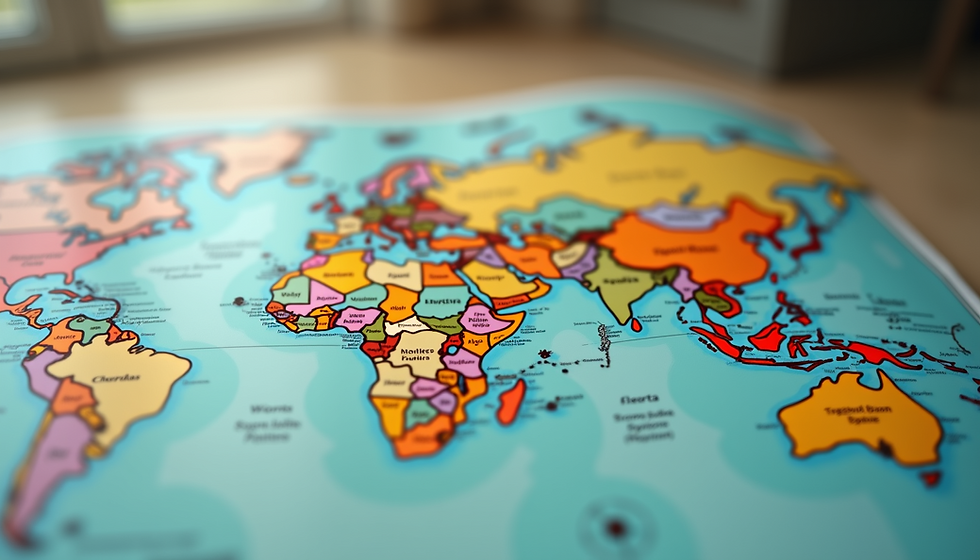Best Times to Visit Sumatra’s Jungle: A Seasonal Guide
- The Anxious Passport
- Dec 21, 2024
- 3 min read
Updated: Jan 1

Sumatra’s jungles are a treasure trove of biodiversity, offering unforgettable encounters with lush landscapes and incredible wildlife. However, timing your visit is crucial to making the most of this tropical paradise. Here’s a seasonal guide to help you plan the perfect jungle adventure.
1. Dry Season: May to September
The dry season is the best time to visit Sumatra’s jungles for trekking and wildlife spotting. With minimal rain, trails are more accessible, and animals are easier to find as they gather around water sources.
What to Expect:
Weather: Warm and humid with less rainfall, making treks more comfortable.
Wildlife: Increased chances of spotting orangutans, Thomas’s leaf monkeys, and hornbills.
Trails: Trails are drier and less muddy, reducing the difficulty of your trek.
Highlights:
Trekking in Gunung Leuser National Park, home to orangutans and other unique wildlife.
Camping in the jungle under clear, starry skies.
River tubing adventures in Bukit Lawang without strong currents or heavy rain.
Pro Tip:
Book accommodations and guides in advance, as this is the peak trekking season and popular spots can fill up quickly.
2. Rainy Season: October to April
The rainy season brings heavy downpours, but it also enhances the jungle’s lushness and vibrancy. While trekking can be more challenging, this time offers a quieter, more immersive experience for adventurous travelers.
Trekking through the Sumatran jungle during the rainy season was nothing short of a test of endurance. The suffocating humidity clung to every inch of me, while leeches littered the wet, slippery, muddy ground, becoming an unavoidable annoyance. Mosquitoes were everywhere, relentless in their pursuit. As a woman, the simple act of using the restroom—requiring me to squat—became an invitation for bites on my thighs and buttocks, adding an unexpected layer of discomfort.
All of my clothes remained damp, no matter how carefully I tried to dry them. Rain fell every night and often in the early mornings, drenching everything except the few essentials I managed to keep protected in a dry bag. My shoes and socks were perpetually soaked, making the ritual of putting them on each morning a uniquely uncomfortable challenge.
But despite these struggles, the rain wasn’t all bad. It brought with it a certain magic, transforming the jungle into a quieter, lusher, and more intimate environment. The air was thick and heavy, carrying the rich scent of rain-soaked earth and vegetation. The jungle felt alive, refreshed, and vibrant, with an ambiance that couldn’t be replicated in the dry season.
The rain provided a unique opportunity to witness the jungle at its freshest—a vivid green paradise glistening with droplets, its beauty heightened by the challenges I faced to experience it.
Uncomfortable? Certainly. Worth it? Absolutely.

What to Expect:
Weather: Frequent rain showers, high humidity, and cooler temperatures in the evenings.
Wildlife: Animals may be less active during heavy rains but are still present in abundance.
Trails: Expect muddy and slippery paths, making sturdy boots essential.
Highlights:
Witnessing the jungle at its greenest and most vibrant.
Visiting waterfalls like Batu Katak, which are more dramatic during the rainy season.
Enjoying fewer crowds, making for a more tranquil experience.
Pro Tip:
Pack waterproof gear and leech socks, and be prepared for last-minute changes in plans due to weather.
3. Transitional Months: April and October
The months at the edges of the rainy and dry seasons can offer the best of both worlds. Rainfall is less frequent than during the peak rainy season, but the jungle remains lush and alive.
What to Expect:
Weather: A mix of sunny days and light showers, with manageable humidity levels.
Wildlife: Active and visible, especially around water sources.
Trails: muddy but generally passable. Slipping was often unavoidable and was followed by the guide laughing and yelling out “ WELCOME TO THE JUNGLE!”
Highlights:
Easier wildlife spotting as animals adjust to changing seasons.
Vibrant flora with blooming flowers and dense greenery.
Ideal conditions for photography, with misty mornings and rich colors.
Pro Tip:
These months are perfect for travelers who want to avoid the crowds of the dry season without braving the full force of the rainy season.
Special Considerations for Wildlife Spotting
Orangutans: Found year-round in places like Bukit Lawang and Ketambe, but drier months improve accessibility.
Birdwatching: Best during the transitional months when the jungle is alive with activity.
Turtles and Marine Life: If combining your jungle trek with snorkeling or diving, marine life is most vibrant during the dry season.
Final Thoughts
While Sumatra’s jungle offers beauty year-round, the dry season is ideal for most travelers due to better trekking conditions and easier wildlife spotting. However, if you’re willing to embrace a little rain, the lush vibrancy of the rainy season offers a magical and quieter experience.
No matter when you visit, Sumatra’s jungle will captivate you with its wild charm and incredible biodiversity.




Great tips!